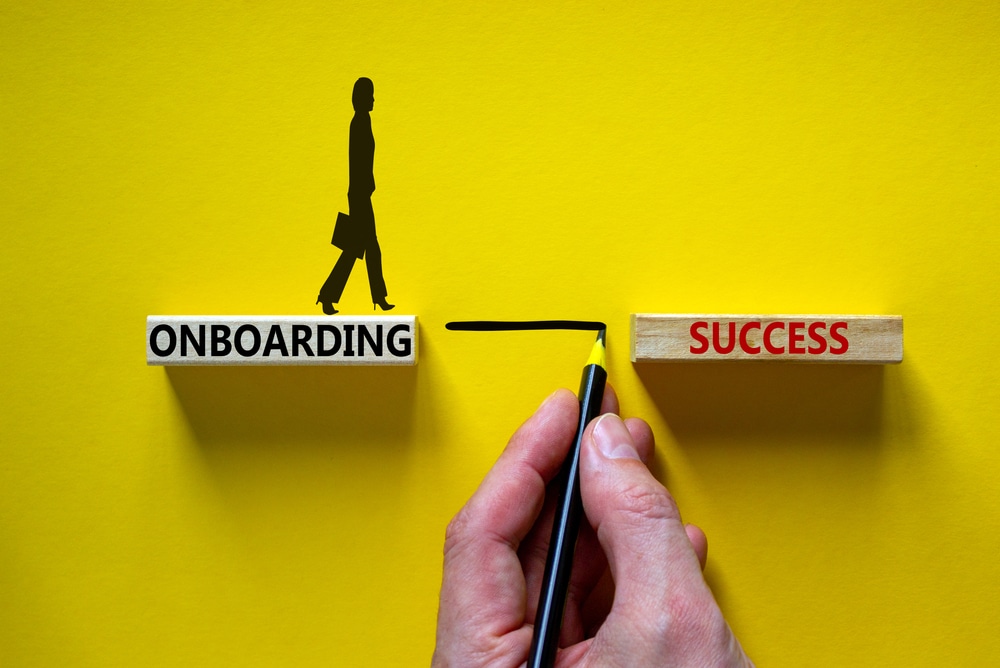Best practices for successful customer onboarding
Customer onboarding is all about getting new customers to know and trust you. If you ensure they get a solid grasp of the product or service they just signed up for, then you’re well on your way to a long, mutually rewarding relationship.
Here are our top 8 customer onboarding best practices to get you started.
1. Your onboarding process should be flexible and easy to navigate
An inflexible and complicated onboarding process will make it difficult to fulfil your customers’ needs. Remember – the object of the exercise is to help your new customers trust you and feel at ease about using your product.
Complicated processes also make it more difficult for your customer service agents to onboard and help your customers. So even if it costs a bit more, a top-notch onboarding process will be well-worth the money.
2. Know your customers so you can create realistic customer expectations and milestones
From the word go, your aim must be to help your customers feel comfortable and confident with your product. If you can establish how they define success and what they want from the relationship, you know what to give them!
This starts with knowing your customers, so you can create realistic customer expectations and milestones, resulting in positive CX all round. Establish the right expectations from the very first touchpoint with your customer.
Knowing what types of customers are using your product allows you to create a personalised onboarding process for each group. Engaging onboarding content like videos, announcements, walkthroughs, and slideshows can be especially helpful.
3. Ensure your customers have a customised experience
Think of your customer as a new ‘employee’ that you need to make feel at home and incorporate into your organisation. In truth, your customer is a valuable new partner. By individualising their onboarding experience, they will feel welcome, valued and part of your organisation.
Don’t be shy to ask them how they are experiencing the onboarding process, whether they have any questions, or if there is anything you can do to improve it.
4. Communicate, communicate, communicate!
Though this may seem blindingly obvious, it bears repeating. Communication and contact is essential for success during a good onboarding process. Make sure your customers know you’re available and won’t abandon them after the sale! Successful communication can really make or break your relationship with your customers.
5. Focus on developing and building the customer relationship after onboarding
Remember that onboarding is not just for this sale. It should be the start of an ongoing partnership that you need to nurture into the future to the mutual benefit of you and your customers.
Here are some easy ways to do it:
- Assign personal account managers to check on customers’ progress.
- Ensure your customers have easy and intuitive ways to communicate with their account managers.
- Follow up with customers to see if they have any questions or suggestions about your products, services, or processes.
- Encourage your reps to contact customers to upsell or cross-sell to them.
- Engage with your customers and their content on social media.
Like we said earlier – genuine and sustained communication!
6. Ensure you onboard account upgrades, new products, and product add-ons too
Existing customers buying something new from you (or getting an upgrade) will need to go through an onboarding process again to learn how to use their new product or service.
You should therefore ideally have multiple onboarding processes and teams. So, while some customer service agents take care of onboarding new customers, others must help return customers with upgrades or add-ons.
Never forget that repeat customers are particularly valuable, because they already trust your brand. Keep them happy by continuously assessing their needs and keeping in touch. Check on an ongoing basis if their needs are being met, and whether they’re still receiving the personalised CX that customers value so much.
7. Keep gathering data
You can’t have too much data about your customers. (Well, without infringing on their privacy of course!) Gather info about their buying tendencies, the length of a typical sales cycle, and how your customer fares in the market.
In fact, 68% of prominent businesses believe their success is heavily underpinned by data collection and analysis. This will aid you not just through the onboarding process, but well beyond it too.
8. And finally – onboard your team!
This means your whole team, not just your marketing team. Everyone involved in the onboarding process should understand your customers’ needs and pain points.
The basis for this lies in the relatively new concept that we mentioned earlier, namely customer success. You and your team need to know what your customers regard as success.
Your onboarding brief must align your whole team like a well-oiled machine to ensure the efficient and speedy flow of this crucial process. Don’t let hiccups during the onboarding process undermine the secure foundation you want to build with your customers.
In conclusion
Customer churn is an unfortunate but inescapable fact of online marketing, as so many businesses have discovered. However, a solid customer onboarding process can offer you significant protection from churn and lessen its damaging impact.



